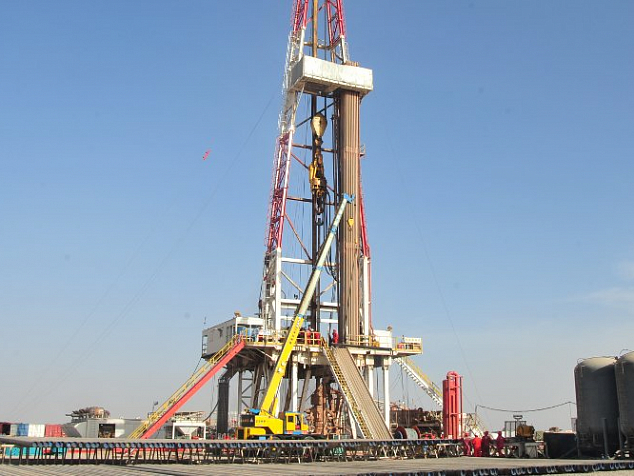
Producing formations can be found under the hard, overhanging cap of salt domes. Formation pressures along fault planes may also affect hole conditions. In unstable areas, a wellbore drilled through a fault zone could be at risk because of the possibility of slippage or movement along the fault. Instead, the wellbore may be deflected perpendicular or parallel to the fault for better production. It is often difficult to drill a vertical well through a steeply inclined fault plane to reach an underlying hydrocarbon-bearing formation. Oriented sidetrack is required if a certain direction is critical in locating an anticipated producing formation. Drilling around obstructions, such as a lost string of pipe, is usually accomplished with a blind sidetrack. This technique may be employed either to drill around obstructions or to reposition the bottom of the wellbore for geological reasons. This is also applicable to multiple production zones adjacent to a fault plane or beneath a salt dome. There are certain cases in which the attitudes (bed dips) of the producing formations are such that the most economical approach is a directional well for a multiple completion. Applications like this are where “extended-reach” wells are most commonly drilled.Ī very cost-effective way of delivering high production rates involves intersecting multiple targets with a single wellbore. The location of a producing formation dictates the remote rig location and directional-well profile. Directional drilling has helped by greatly reducing the costs and environmental impact of this application.Ī well is directionally drilled to reach a producing zone that is otherwise inaccessible with normal vertical-drilling practices. Listed are some of the major applications of directional drillingįield developments, particularly offshore and in the Arctic, involve drilling an optimum number of wells from a single platform or artificial island. 1.1 Multiple wells from a single location.All other calls should be directed to Michele Gillen at (617) 788-1191 during regular work hours - 8:30a.m. Monday to Friday and on Saturdays and Sundays. Please call 1-888-Tunnel2 should a problem occur between 5p.m. What should I do if a problem arises during the night? Adherence to the established noise and light requirements will be strictly enforced. The contract also includes many requirements to protect nearby residents from the glare and illumination of temporary lighting, including aiming lighting away from nearby homes and equipping lighting with shielding, reflecting or visors. The contractor is required to use proper mufflers and self-adjusting back-up alarms on all equipment and shields and enclosures around stationary equipment. The contract includes stringent noise limits and HDD will be closely monitored by MWRA staff and consultants for compliance with these limits.

To make sure these do not become a problem on this project, we have included many noise and light requirements in the contract. Typically, the biggest issues that arise for neighbors during night work are related to noise and light. What will be done to make sure the night work is not too disruptive? A collapse would require the contractor to excavate at the point of collapse and would likely result in significant delays.

Once pipe pullback begins, the operation must be continuous until it is complete in order to avoid a potential collapse in the previously reamed hole. Why is it necessary to work 24-hours-a-day, seven-days-a-week during pipe pullback? Work beyond this time frame can be requested by the contractor and authorized by the MWRA. except during pipe pullback which is allowed 24-hours-a-day, seven-days-a-week. The contractor is allowed to work Monday - Friday from 7a.m.

What are the allowable hours of operation?

This includes about 3-4 weeks of drilling and 1-2 weeks to pull the pipe back. Since the end of February the contractor has been welding the pipe at the Exelon property that will be pulled by the directional driller back through the hole.Ĭompletion of each siphon will take approximately 4-6 weeks. The hole will then be enlarged through successive reams until it is large enough to fit the pipe. From the drill rig location, a a drill rig will drill a pilot hole under Fore River to the Exelon property in North Weymouth. Work will occur from two locations: a drill rig location which is in Idlewell at the end of Arlington Street and a pipe assembly location which is at the Exelon property in North Weymouth. Two siphons will be constructed under the Fore River utilizing a technology called horizontal directional drilling or HDD.


 0 kommentar(er)
0 kommentar(er)
